Pattern/Duplicating Wood Lathe
by omnitasker in Workshop > Tools
14784 Views, 136 Favorites, 0 Comments
Pattern/Duplicating Wood Lathe
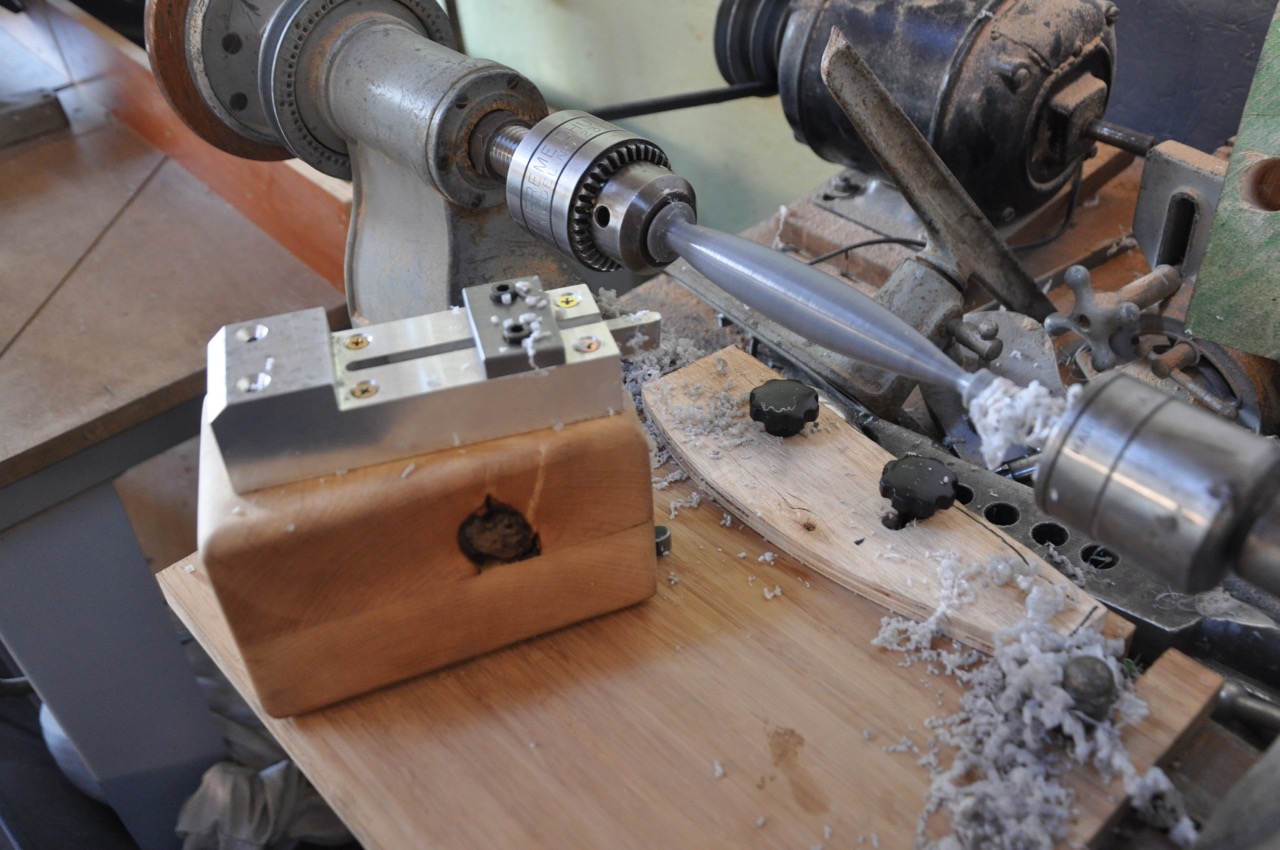
I needed to turn some plastic parts that were all the same (within reason) I didn't want to spend the money having them CNC turned and I didn't need that kind of accuracy anyway. I decided to build my own pattern lathe.
This particular instructable is not so much to provide a step by step "how-to," but rather the inspiration for your own creation. Having built this one, I would do it slightly differently, as I'm sure you will too.
I have access to a fairly complete shop, but perhaps you do not. Feel free to make do with what you have, innovate and experiment. Do not let the limitations of your tools dictate the directions you take.
Tools:
- Wood lathe
- Vertical Mill (Bridgeport)
- End mill(s)
- Fly cutter
- Vertical Wood Bandsaw,
- Horizontal Bandsaw
- Metal lathe
- Trim router
Materials:
- Block of maple
- Block of aluminum
- Small block of steel
- HSS tool blank
- Misc hardware
- ø1" Plastic (ABS and/or acrylic)
- 12x12" (approximately) piece of 3/4" plywood (or Plyboo® in my case)
Planning Things Out
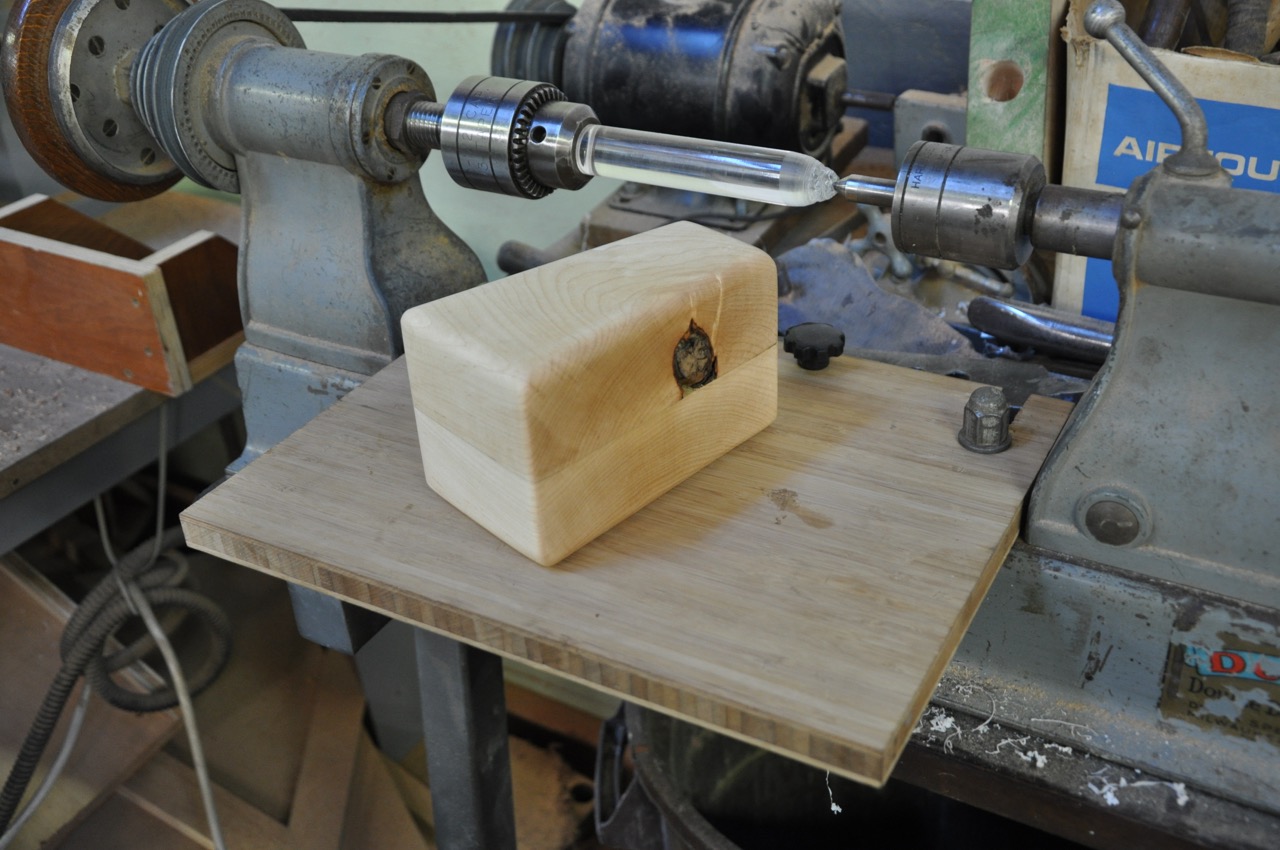
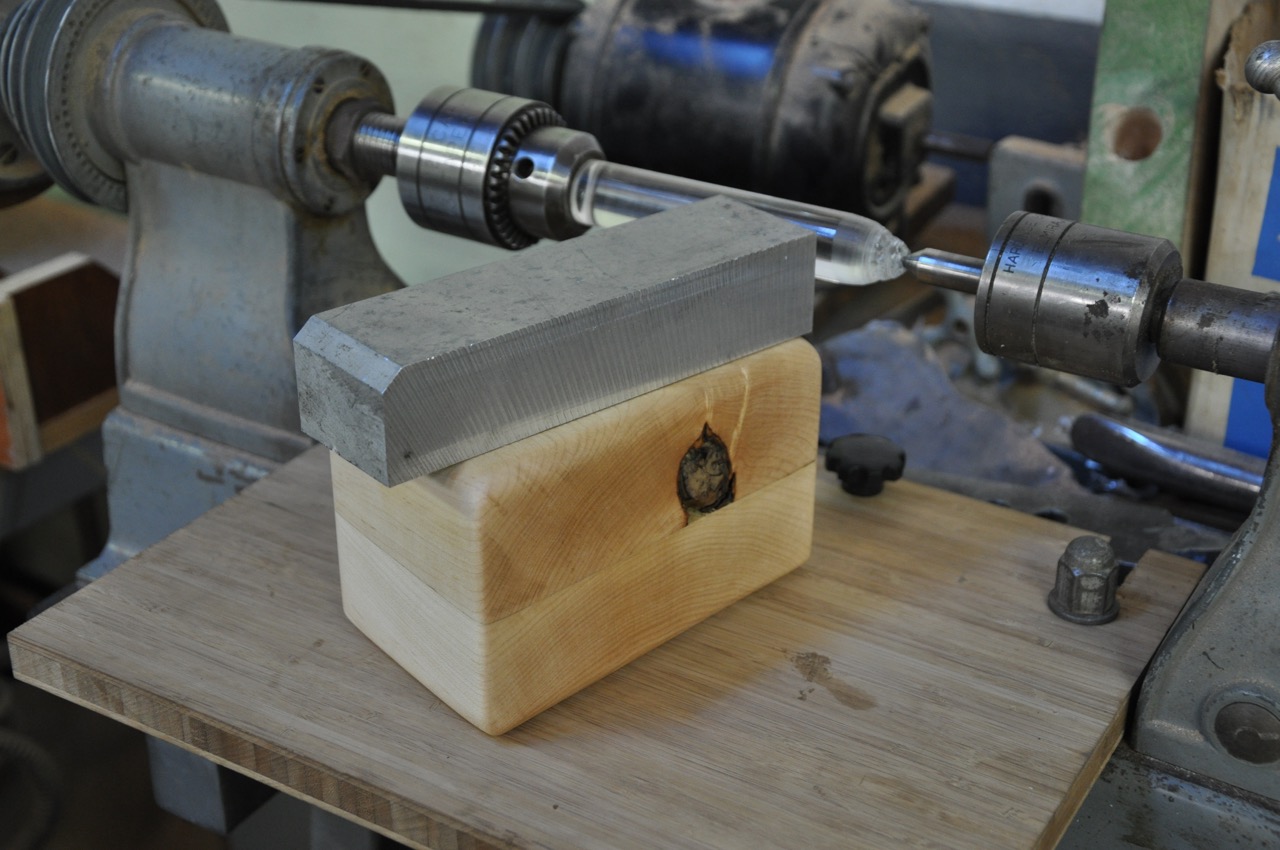
I have a 1930s Delta Double Duty Lathe. It's an inexpensive yet highly versatile lathe. One of its nice aspects is that is that you may use several banjo hold-down studs, allowing you to lock down multiple banjos, steady rests, or in our case, a flat piece of plywood that will serve as our working surface. I used a scrap of 3/4" Plyboo® because of it's rigidity and smooth surface. To attach is to the lathe, I simply drilled two holes, then cut them into slots with the vertical bandsaw. Attaching the work surface is as simple as sliding it over the studs and tightening the two nuts.
I also installed two 5/16-18 tee nuts on the bottom of the work surface that would give me a point to attach the templates (patterns) in the future. I used a center to center distance of 4" so I could easily make a new template that I knew would fit.
Next, I glued together two pieces of 8/4 maple scrap and router/sanded them smooth. This is to serve as the tool holder. I needed more height to get to the centerline of the lathe, so I scrounged around for a piece of scrap aluminum.
Machining the Tool Holder
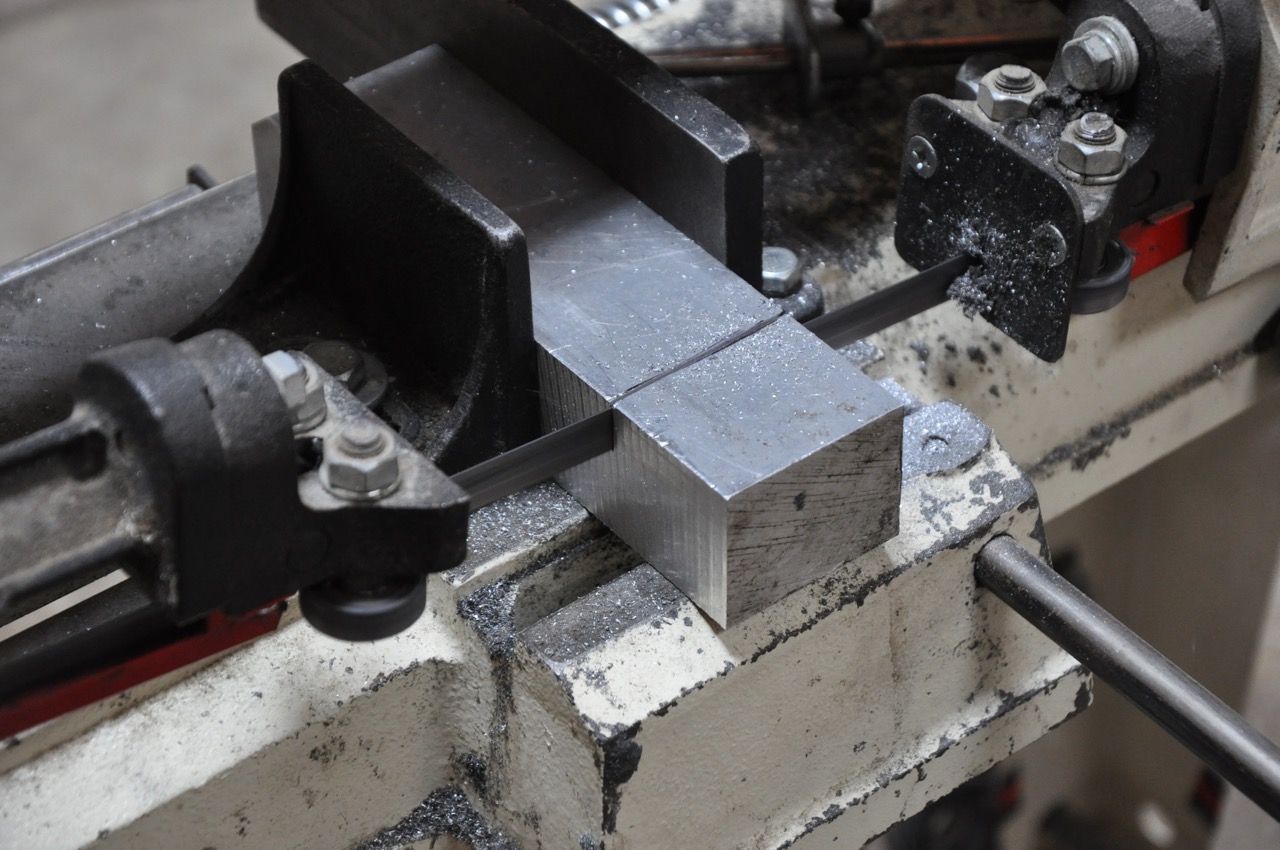
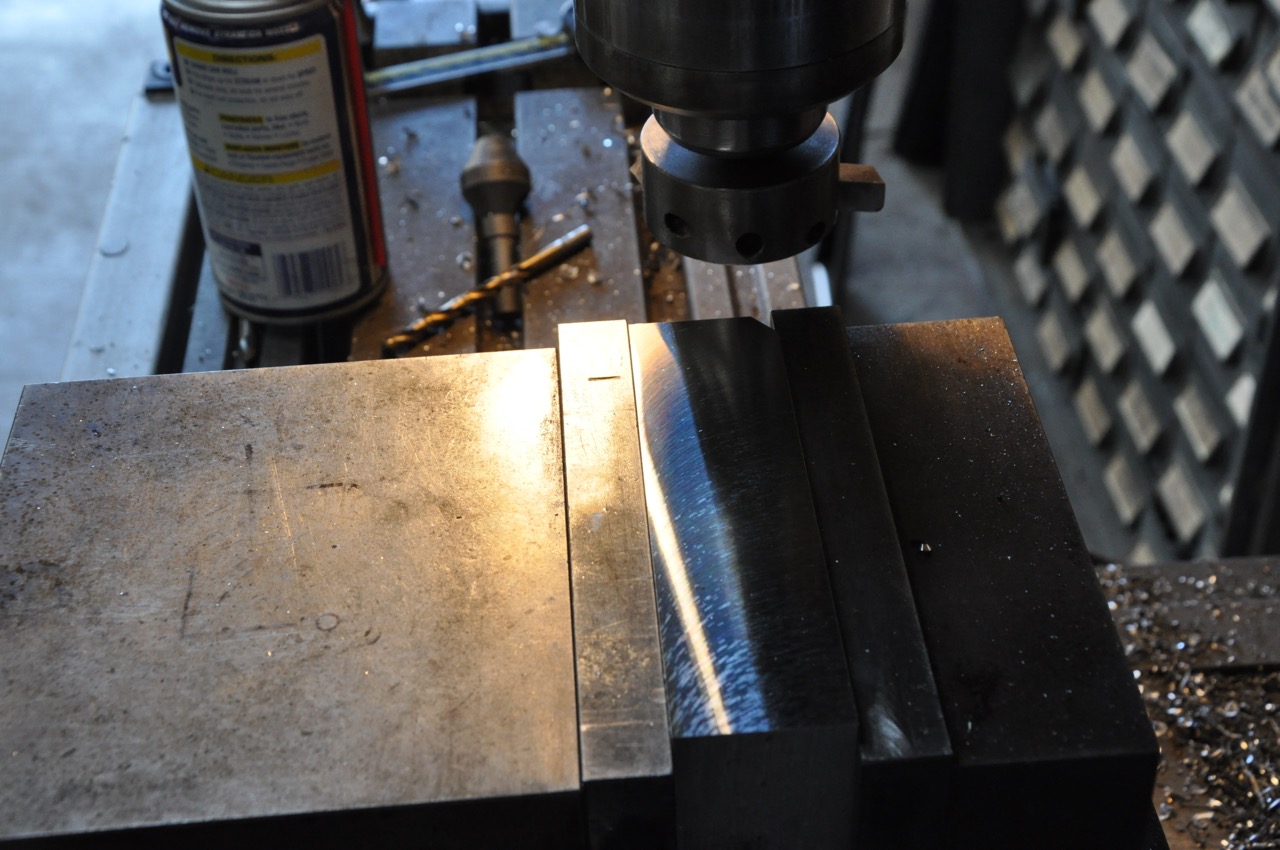
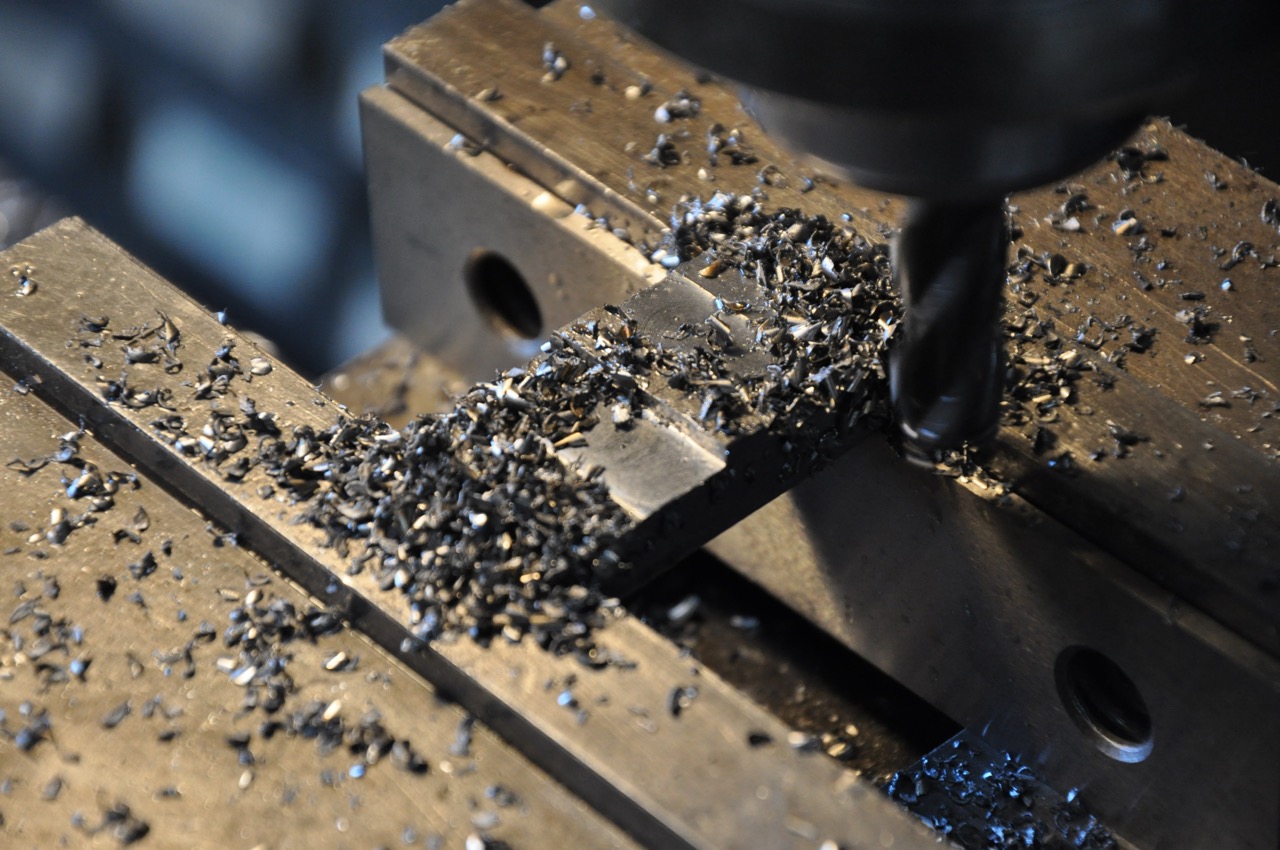

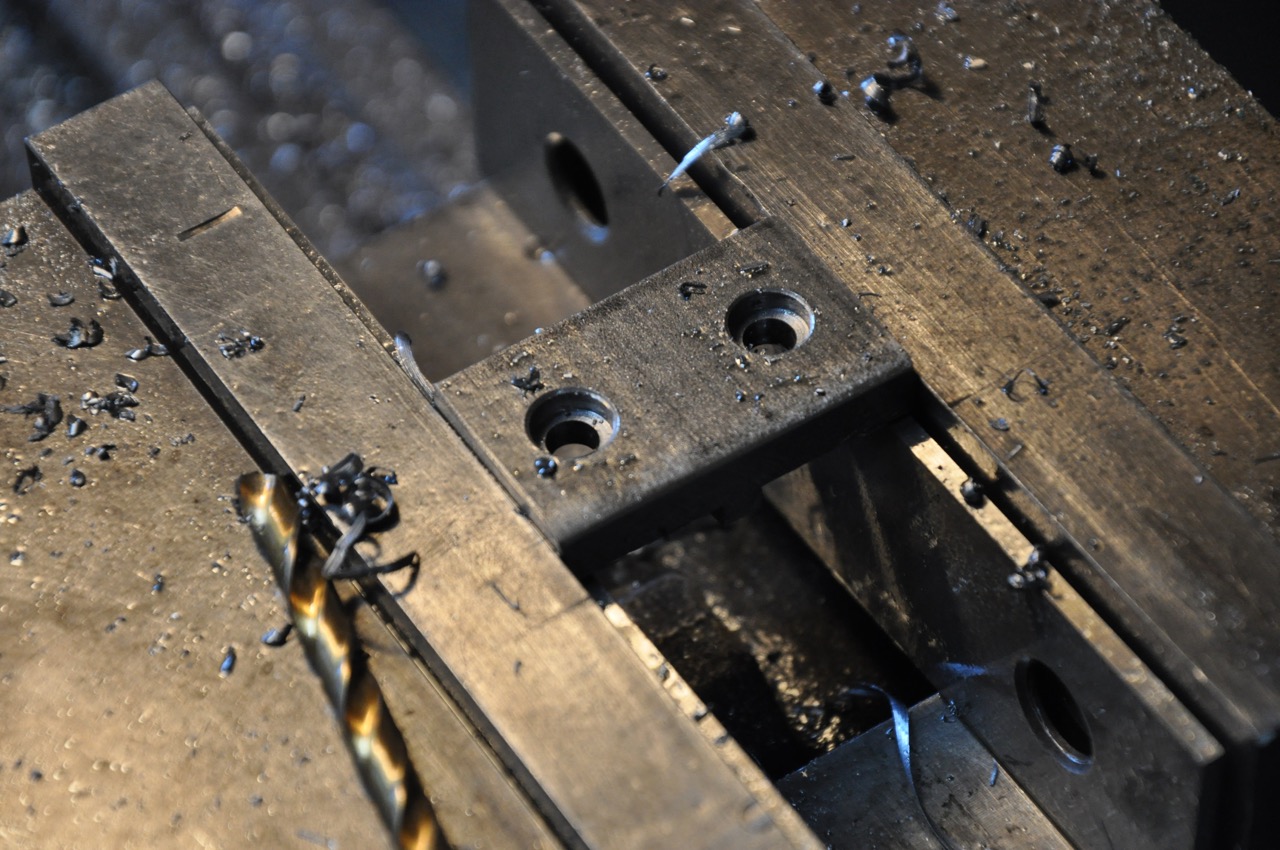
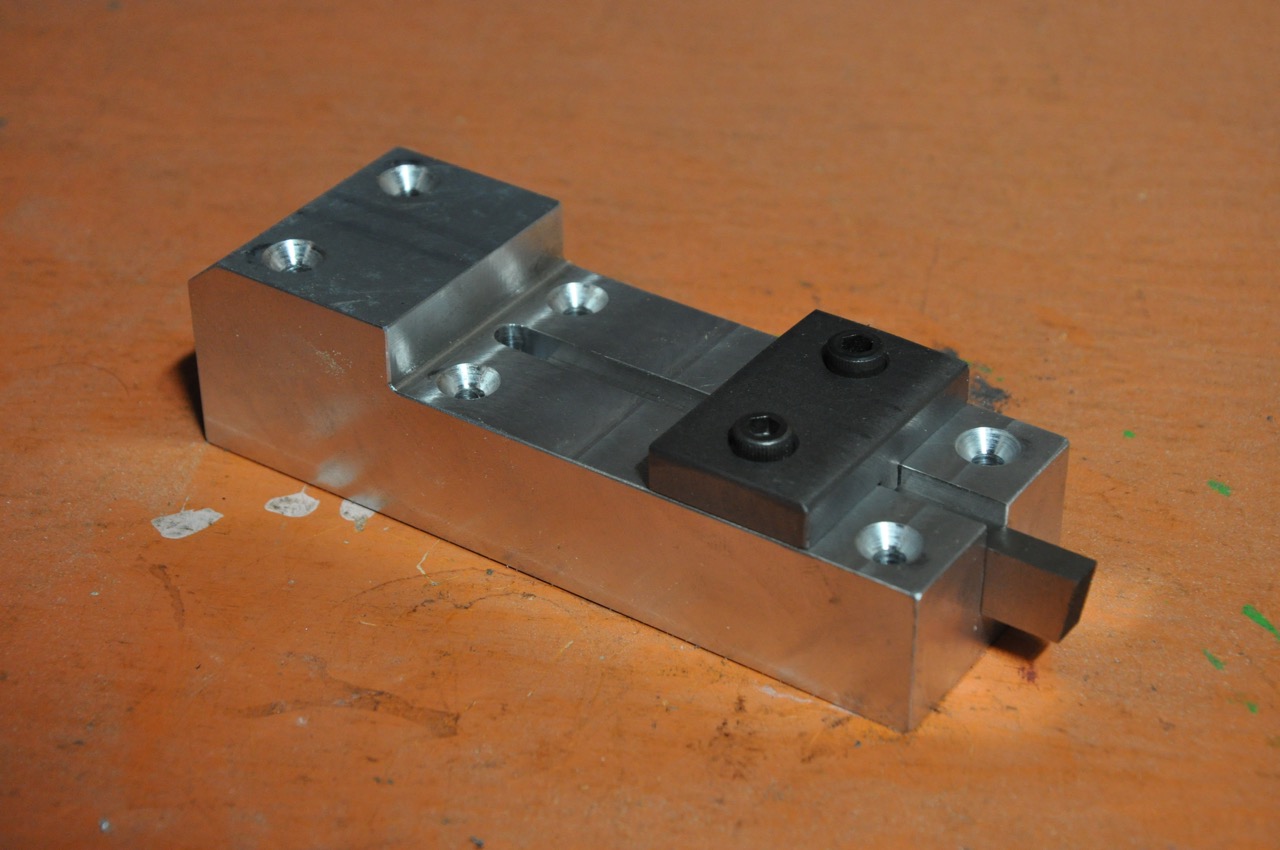
I was using a new piece of 1/4x3/4" HSS as my cutting tool, and now it was time to make a holder from it. I cut the aluminum bar to length, machined it smooth and made a tool clamp from a piece of steel.
Setup and Testing
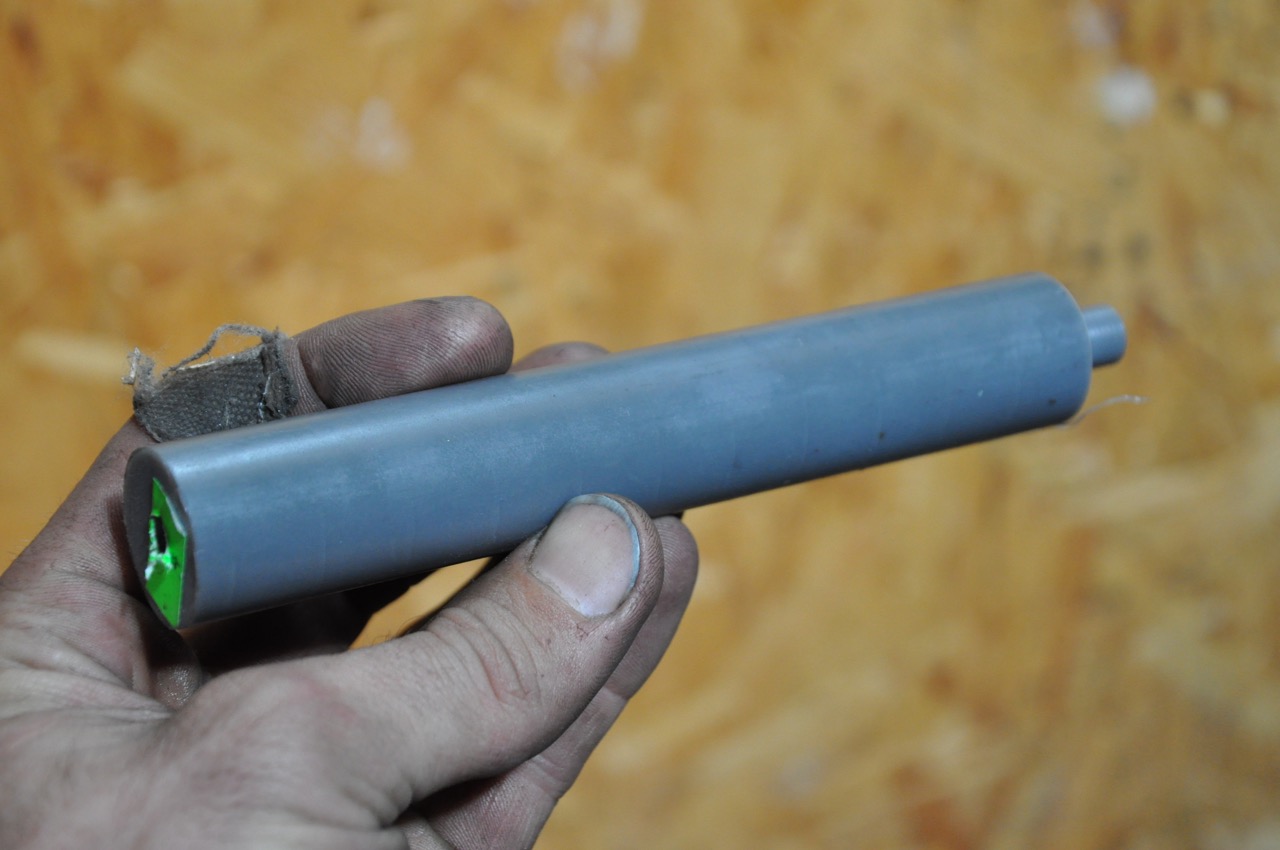
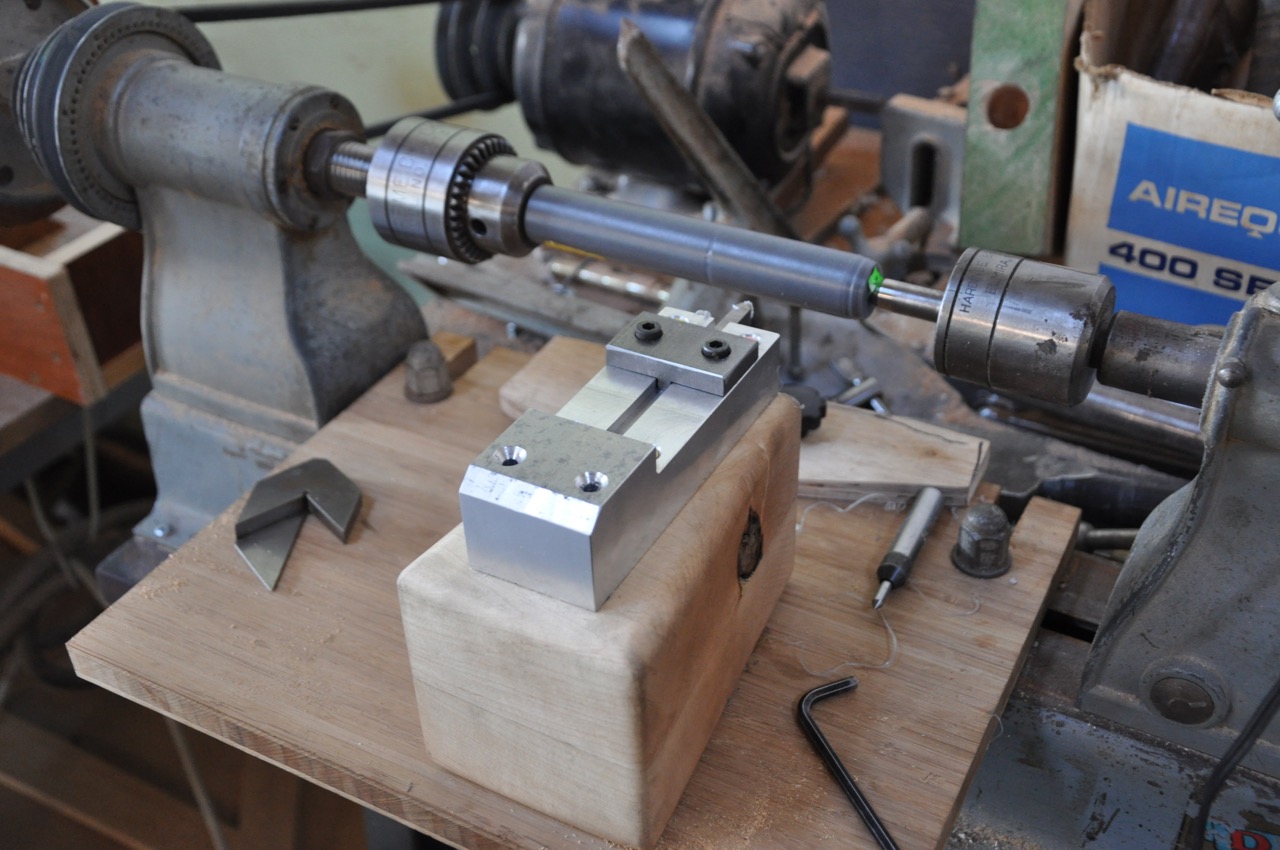
To test the setup I had made, I turned the ø1" plastic round bar down to ø3/8" at one end so I could grip it in a standard drill chuck. The other end was drilled with a center drill.
I cut a quick template on the bandsaw that was roughly the shape I wanted. I cut slots in it so it could attach the the work surface and adjust as needed.
Modification
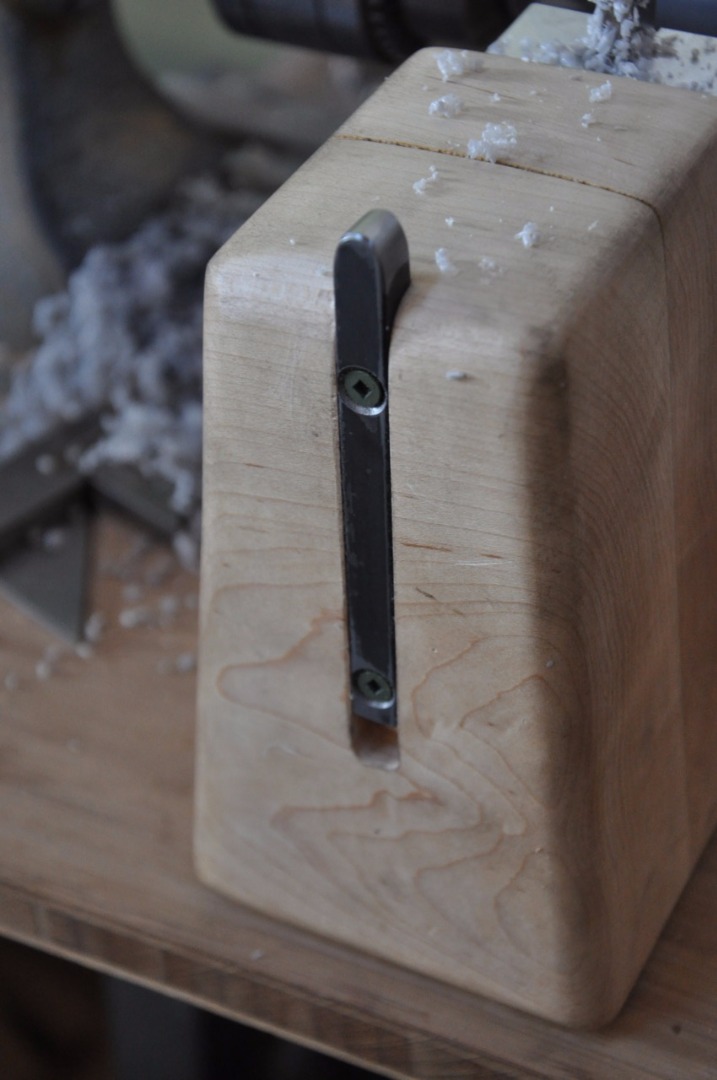
My first test was not a great success. The wooden part of the tool holder didn't ride on the template very smoothly, and the cutter was a bit grabby.
My modification was to cut a slot on the bottom of the tool holder and install a piece of steel bar that was rounded over and smoothed.
I then used a square to set the tool stick-out to match that of the pattern. The steel bar rides on the template, and the cutter is extended to match the steel bar.
Production
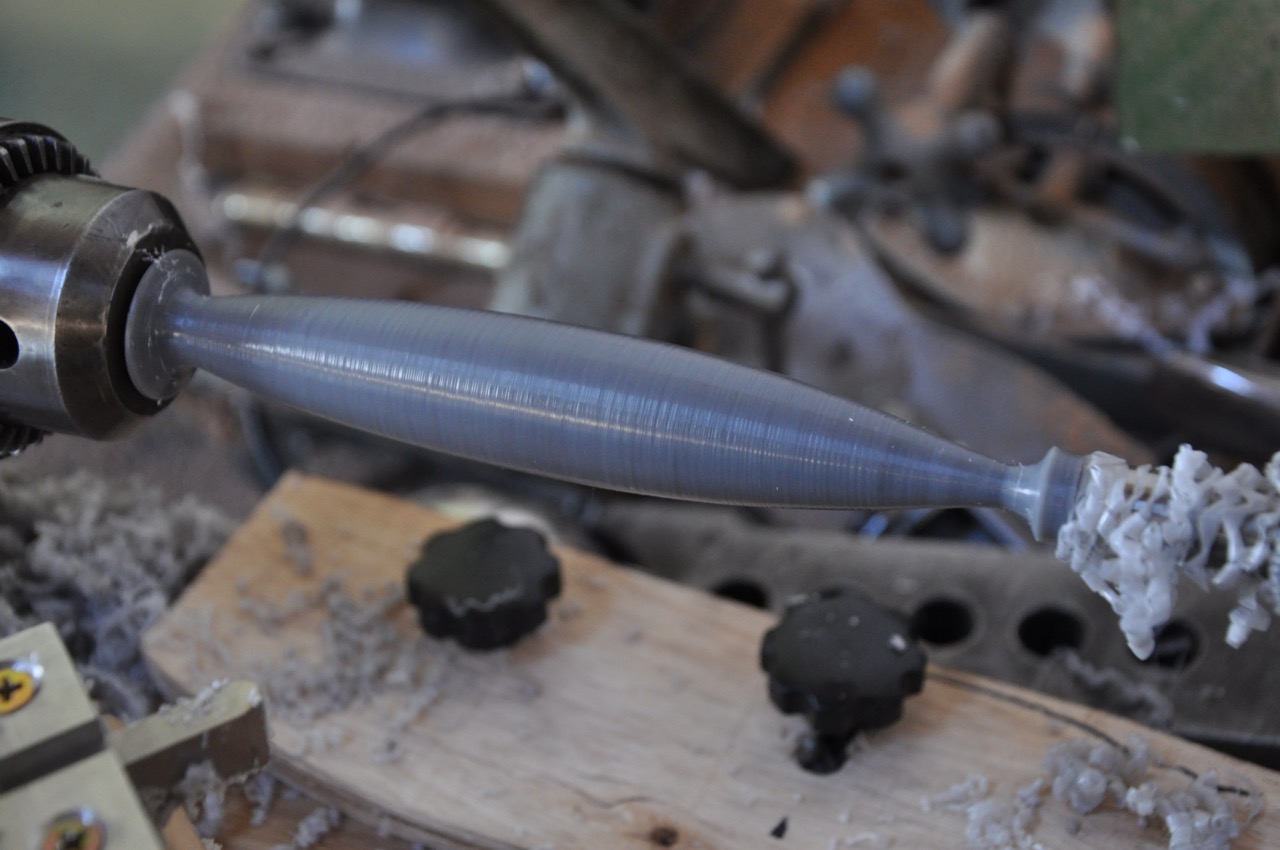
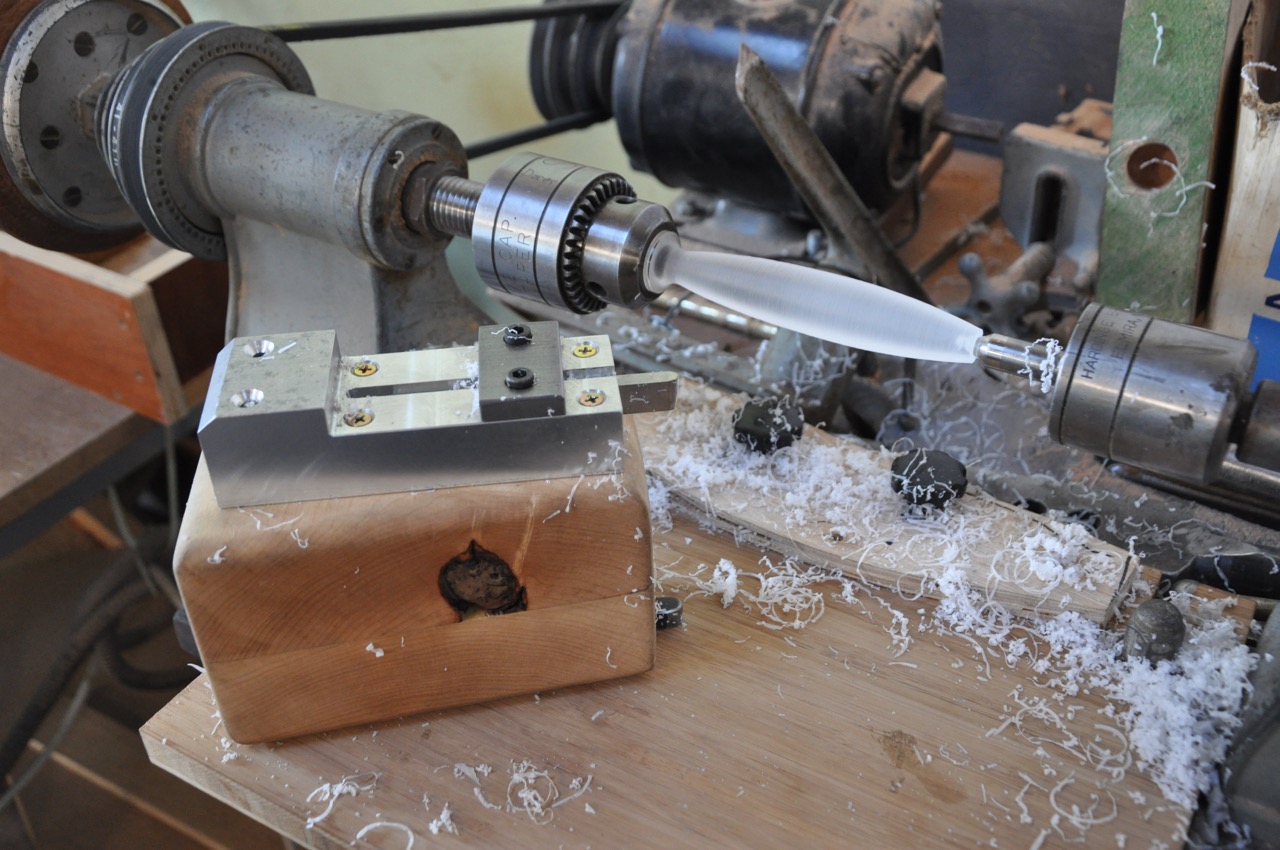
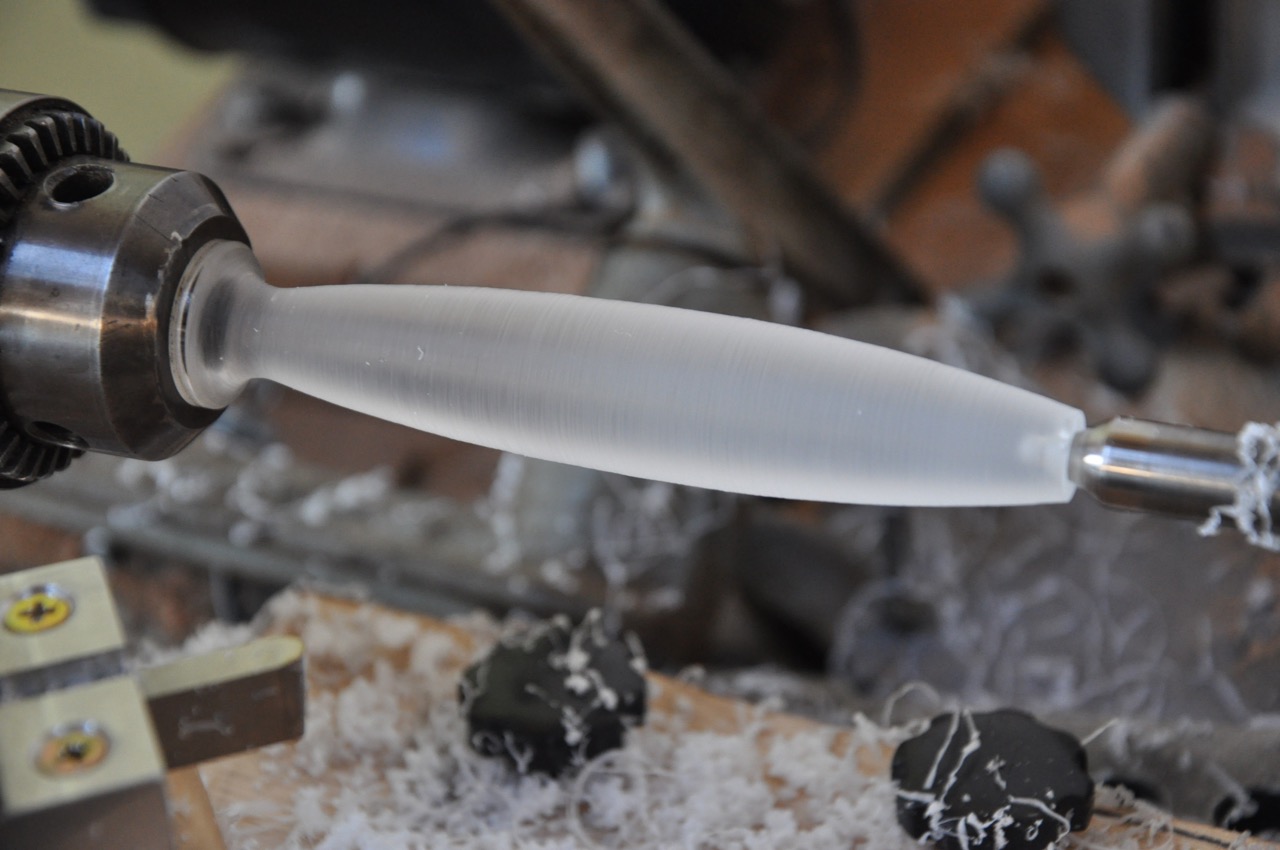
I had to experiment a little with the grind of the cutter, but I finally settled on a shallow rake with a chip breaker that I liked. The geometry of the cutter will heavily depend on the material you wish to cut. Don't be afraid to experiment.
The tool is easy to hold and control, though I may add handles for added security in the future.